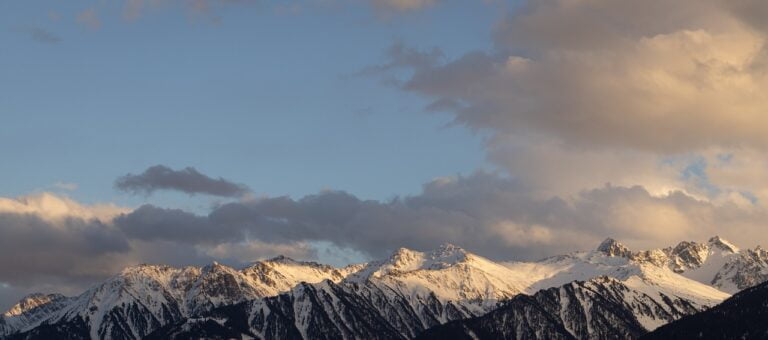What Are the Best Months to Travel in Africa?
The ideal time for traveling in Africa depends on the region, with the dry seasons of winter and early spring (June to October) offering the best conditions for venturing into wildlife habitats. During this time, sparse vegetation makes it easier to spot animals, and cooler temperatures create a comfortable environment for travelers. It's also the ideal time to witness the Great Migration in East Africa. As you venture into the continent, you'll discover that each region has its unique charm and attractions, and understanding the best months to travel will improve your overall African adventure. There's more to uncover…
Best Time for Safari Adventures
Planning a safari adventure in Africa requires careful consideration of the continent's diverse climate zones, with the dry seasons of winter and early spring (June to October) offering the best conditions for venturing into wildlife habitats to venture into their natural environments. During this period, the vegetation is sparse, making it easier to spot animals, and the dry riverbeds become natural pathways for wildlife to congregate around water sources. Additionally, the cooler temperatures and lower humidity create a more comfortable environment for travelers. This is an ideal time to witness the Great Migration in East Africa, where millions of wildebeests, zebras, and gazelles make their way in search of greener pastures.
Peak Season in Southern Africa
In Southern Africa, the peak season typically falls between May and October, offering ideal conditions for travelers. During this period, the weather is mild and pleasant, making it perfect for outdoor activities and wildlife observation. As we delve into the peak season in more detail, we'll examine the specific advantages of traveling during this time, including favorable weather, exciting wildlife migration patterns, and the bonus of fewer tourist crowds.
Best Time Weather
During the southern hemisphere's summer months of December to March, Southern Africa experiences its peak season, characterized by warm temperatures and abundant sunshine. This ideal weather makes it an excellent time for outdoor activities like safaris, hiking, and water sports. The warm climate also brings long days, allowing for maximum exploration time. Average high temperatures range from 25°C to 30°C (77°F to 86°F), making it perfect for sun-soaked adventures. However, it's essential to pack for the heat, with light, breathable clothing, sunscreen, and a hat. Additionally, be prepared for occasional summer storms, which often bring welcome relief from the heat. Overall, the warm weather during peak season in Southern Africa creates an idyllic setting for an unforgettable African adventure.
Wildlife Migration Patterns
Southern Africa's peak season coincides with the great migration of wildlife, as thousands of animals, including wildebeest, zebras, and antelopes, make their way to greener pastures in search of food and water. This mass movement typically occurs between May and October, with the most intense activity happening during the dry winter months. As the landscape transforms into a vibrant tapestry of green, the wildlife congregates around watering holes, making it an ideal time for game viewing and photography. The peak season offers unparalleled opportunities to witness the majesty of Africa's wildlife up close, and many national parks and game reserves offer guided tours and safaris to maximize the experience.
Fewer Tourist Crowds
Peak-season travelers to Southern Africa often find themselves rewarded with a relative sense of solitude, as the dry winter months draw fewer tourists to the region. This is particularly true for destinations like Namibia, Botswana, and South Africa, which experience a significant drop in visitor numbers during the winter season (June to August).
- The scenic landscapes and national parks are less crowded, allowing for a more intimate and immersive experience.
- Accommodation prices tend to be lower, making it an excellent time for budget-conscious travelers.
- The dry weather also makes it an ideal time for outdoor activities like hiking, biking, and safaris, with clearer skies and more comfortable temperatures.
East Africa's Dry Season Delights
East Africa's dry season, which typically spans from June to October, is a prime time to discover the region's natural wonders. During this period, the arid landscape transforms into a wildlife viewing paradise, with animals congregating around scarce water sources, making them easier to spot. With comfortable travel conditions and scenic landscapes unfolding, travelers can experience the best of East Africa's dry season delights.
Wildlife Viewing Paradise
During the dry season, which typically spans from June to October, the parched landscapes of East Africa transform into a wildlife viewing paradise. As water sources dwindle, animals congregate around remaining watering holes, making them easier to spot. This concentration of wildlife creates unparalleled opportunities for thrilling safari experiences.
- The Great Migration, one of the world's most spectacular wildlife events, takes place during this time, with millions of wildebeest, zebras, and gazelles making their way across the Serengeti and Maasai Mara.
- The dry season also brings better visibility, as trees and grasslands dry out, making it easier to spot elusive predators like lions, leopards, and cheetahs.
- With the dry landscape, comes a sense of adventure, as travelers can venture into the rugged terrain, and immerse themselves in the untamed beauty of East Africa's wilderness.
Scenic Landscapes Unfold
As the dry season sets in, the once-lush landscapes of East Africa metamorphose into a kaleidoscope of golden hues, rust-red earth, and cloudless blue skies, unfolding a scenic tapestry that is as breathtaking as it is unforgiving. The dry season, which typically spans from June to October, brings forth a dramatic transformation, as the verdant grasslands surrender to the harsh, yet majestic beauty of the African savannah. The rugged terrain, etched with ancient riverbeds and rocky outcrops, takes center stage, offering a glimpse into the region's ancient history. The dry season's unobstructed vistas and crystal-clear skies make it an ideal time for photography, allowing travelers to capture the essence of East Africa's dramatic landscapes.
Comfortable Travel Conditions
Step into the dry season, and you'll find yourself enveloped in comfortable travel conditions, where mild temperatures, gentle breezes, and low humidity make exploring East Africa's vast wilderness a true delight. This ideal climate allows for extended game drives, leisurely hikes, and scenic flights without the burden of sweltering heat. The dry season's comfortable conditions also enable you to:
- Enjoy clear skies and stunning vistas, perfect for capturing breathtaking photographs
- Take advantage of easier wildlife spotting, as animals congregate around scarce water sources
- Engage in a range of outdoor activities, from hot air balloon rides to horseback safaris, without worrying about the weather
West Africa's Shoulder Season Secrets
Beyond the peak tourist season, West Africa's shoulder season, which typically falls between April and June, offers a unique blend of favorable weather and smaller crowds, making it an attractive time to discover the region's hidden gems. The dry and sunny climate creates ideal conditions for exploring the Sahel region, including Burkina Faso, Mali, and Senegal. With fewer tourists, travelers can experience the authentic culture and hospitality of the locals without the chaos. Take a scenic drive through the Sahel's vast savannas, visit ancient trading cities like Timbuktu, or relax on the stunning beaches of Senegal. With lower prices for accommodations and tour packages, West Africa's shoulder season is a savvy traveler's dream come true.
Morocco's Mild Winter Months
During Morocco's mild winter months, which typically span from December to February, visitors can revel in the pleasant temperatures and fewer tourists, creating an ideal atmosphere for exploring the vibrant cities, ancient medinas, and breathtaking Atlas Mountains. This period is perfect for:
- Exploring Marrakech's bustling souks without the summer crowds, allowing for a more authentic experience.
- Hiking in the Atlas Mountains, where the cooler weather makes for a more comfortable trek.
- Discovering Morocco's rich cultural heritage, including its historic cities, museums, and festivals, without the distractions of peak tourist season.
With comfortable temperatures ranging from 12°C to 18°C (54°F to 64°F), Morocco's winter months offer an ideal blend of relaxation and adventure, making it an excellent time to visit this incredible North African country.
Cape Verde's Year-Round Charm
Located off the coast of West Africa, Cape Verde's archipelago of ten islands boasts a unique blend of African, Portuguese, and Brazilian influences, making it an intriguing destination that can be visited any time of the year. With a tropical dry savanna climate, Cape Verde's temperatures remain steady, ranging from 22°C to 25°C (72°F to 77°F). The ocean breeze and trade winds keep the humidity low, making it an ideal getaway for beach lovers and adventure seekers. From water sports to hiking and cultural exploration, Cape Verde offers a diverse range of activities to suit all interests. With year-round sunshine and pleasant weather, Cape Verde is an excellent choice for travelers looking for a hassle-free African adventure.
Avoiding the Rain in Central Africa
Central Africa's lush rainforests and mighty rivers are a reflection of the region's abundant rainfall, which can be a blessing for the local ecosystem but a curse for travelers who prefer dry and sunny weather. To avoid the rain, it's essential to plan your trip during the dry season, which typically falls between December and February. Here are some key considerations to keep in mind:
- The dry season is ideal for gorilla trekking in countries like Gabon and the Republic of Congo.
- The roads are generally in better condition during this time, making it easier to get around.
- The dry season is also the best time to spot wildlife, as animals congregate around water sources, making them easier to spot.
North Africa's Springtime Surprises
North Africa's spring, which typically spans from March to May, brings a welcome reprieve from the scorching desert heat, offering travelers a unique opportunity to discover the region's vibrant cities, ancient ruins, and stunning natural landscapes without the harsh weather conditions. As the temperatures moderate, visitors can wander through Marrakech's bustling souks, Chefchaouen's blue-hued streets, and the ancient Roman ruins of Leptis Magna in Libya. The spring season also marks the peak blooming period for Morocco's iconic argan trees and Tunisia's vibrant wildflowers. With comfortable temperatures ranging from 15°C to 25°C, North Africa's spring is an ideal time for outdoor activities like hiking, camel trekking, or simply taking in the breathtaking vistas of the Sahara Desert.
Island Hopping in the Indian Ocean
As the warm waters of the Indian Ocean lap against their sun-kissed shores, the islands off East Africa's coast beckon travelers to set out on an unforgettable journey of discovery and relaxation. Island hopping in the Indian Ocean offers a unique blend of cultural exploration, stunning landscapes, and tranquil getaways.
- Visit Zanzibar, a semi-autonomous island off Tanzania's coast, famous for its pristine beaches, historic Stone Town, and vibrant local markets.
- Discover the Comoros Islands, an archipelago of four islands, each with its own distinct character, from the volcanic landscapes of Grande Comore to the coral reefs of Anjouan.
- Relax on the idyllic beaches of Mozambique's Bazaruto Archipelago, a UNESCO Biosphere Reserve and haven for marine life.


